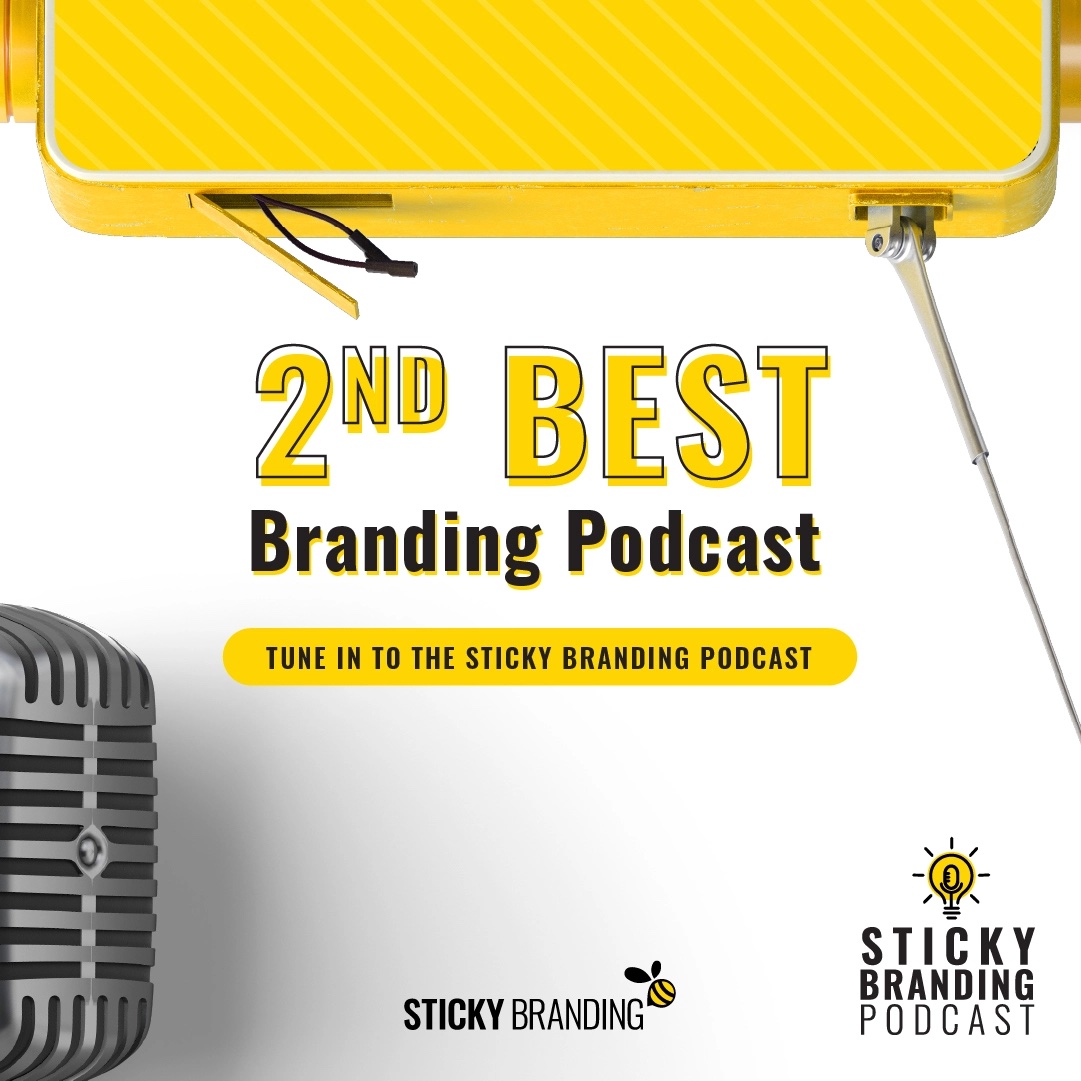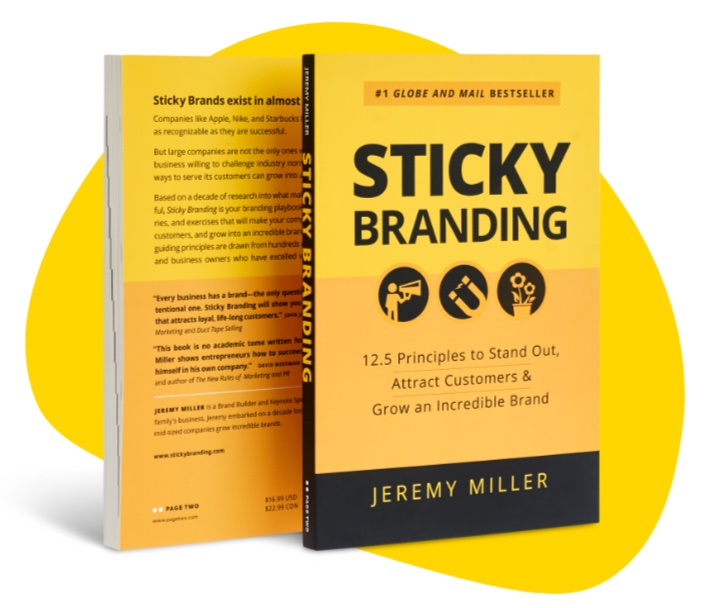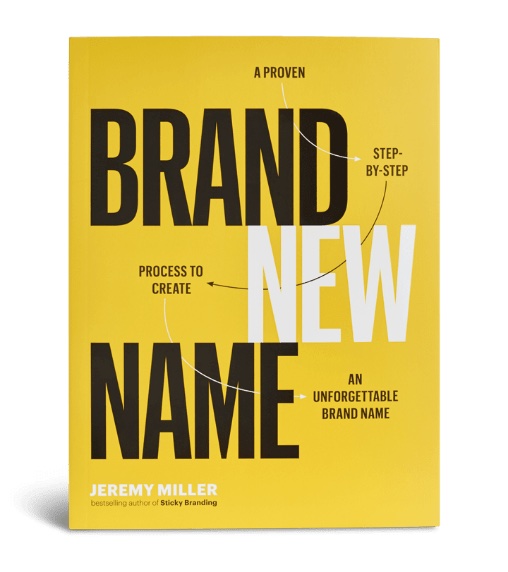Sales performance is the #1 indicator of a brand’s success in small- to mid-sized companies, and you can see it in the data:
- More customer demand
- Higher profits
- Lower competition
Your sales metrics are an effective measure of brand performance. Sure, you can look at other metrics like social media engagement or the number of visitors to your website, but all those metrics roll up to one big question. Is marketing moving the sales needle?
I’m not interested in the soft, squishy side of marketing. I want to see branding and marketing strategies that clearly drive sales results.
The 3V’s of Brand Performance
In Sticky Branding (the book), I talked about the 3V’s of Brand Performance:
- Volume: Demand for your products and services.
- Velocity: The speed a customer travels through the buying process.
- Value: The ability to sell at a premium and avoid discounting.
Volume, Velocity, and Value are three core metrics I examine to evaluate a brand’s performance, because they translate into clear, tangible business results:
- Revenue
- Profit
- Sustainability
The challenge then is how to pull out the data to examine the 3V’s in your business.
Volume: What Is the Demand for your Products and Services?
Volume is a simple metric to capture. It’s demand. How many inquiries or sales leads does your business generate per month?
Volume is a relatively easy metric to track, but it’s hard to move.
Adam Morgan demonstrates in Eating the Big Fish that a brand leader — a company that dominates a category — makes triple the profit of a number two brand. A number-three brand makes half the profit of a number-two.
He says, “If profit allows a company to make choices, to invest resources in finding sources of future competitive advantage, then this disparity serves to widen the discrepancy between the chips the Brand Leader has at its disposal and the pile we have to play with.”
The gap between #1, #2, #3 and everyone else is immense, and this is why generating demand and brand awareness can be so tricky. The odds can be stacked against your brand, and you have to market more aggressively and effectively than the competition to stand out and move the sales needle.
Velocity: How Quickly Do Customers Buy?
Fast, efficient selling demonstrates several aspects of brand performance:
- Clarity: Your brand messaging is clear and your customers get it, want it, and self-select.
- Desire: Your customers have lots of options, but they choose your brand first.
- Process: Your website, marketing materials, and salespeople are aligned. Your brand gives customers everything they need when they need it to make efficient buying decisions.
Tracking sales velocity requires some research and discipline:
- Plot the Buyer’s Journey: Document how your customers move through the buyer’s journey from awareness to consideration, decision, implementation, and application.
- CRM Tracking: Configure your CRM system to track key milestones in the buyer’s journey, and measure the amount of time it takes a customer to move through the cycle.
Once you have time measurements you can look for ways to optimize the buyer’s journey. What can you do to make it easier for your customers to buy?
My holy grail for a brand is the Two Call Close. This is the ability to sell big deals ($10,000 to $75,000) in two calls over two weeks. This is fast, efficient selling that requires polishing your brand into a finely tuned machine.
Value: How Often Does Your Team Discount to Win?
How often does your company have to discount and leave money on the table to win?
A strong brand is price resistant. Customers understand the value of your services, and choose it first. They expect the service to be fair market value, but they don’t expect it to be the cheapest.
Growing a strong brand is your company’s primary line of defense. It’s likes building a moat around a castle that insulates and protects your products and services in measurable ways:
- Increased perceived value and affinity towards your products and services.
- Increased customer attraction and retention. Your customers seek out your brand, and come back frequently.
- Decreased price sensitivity, because your clients choose you first and gravitate towards your brand.
The moat gets deeper and wider the stronger your brand becomes.
A simple metric to monitor Value is discounting. In your CRM or accounting system track discounts:
- How much money is discounted per transaction?
- How much money is lost to discounting per month?
Frequent discounting is the canary in the coal mine for brand challenges. If your brand is relying on discounting to win, it’s selling on price versus value.
Follow the Trend Lines
The 3V’s are a powerful set of metrics, but their true value is realized when you monitor them over time:
- How are they changing month-to-month and quarter-to-quarter?
- What strategies, actions, or market forces influence your metrics?
- How can you get better?
There is no shortage of metrics to manage your business, but the 3V’s will help you quantify and demonstrate brand performance. They help you see how your brand is moving the sales needle, and indicate where your brand is succeeding and where it may be falling behind.





